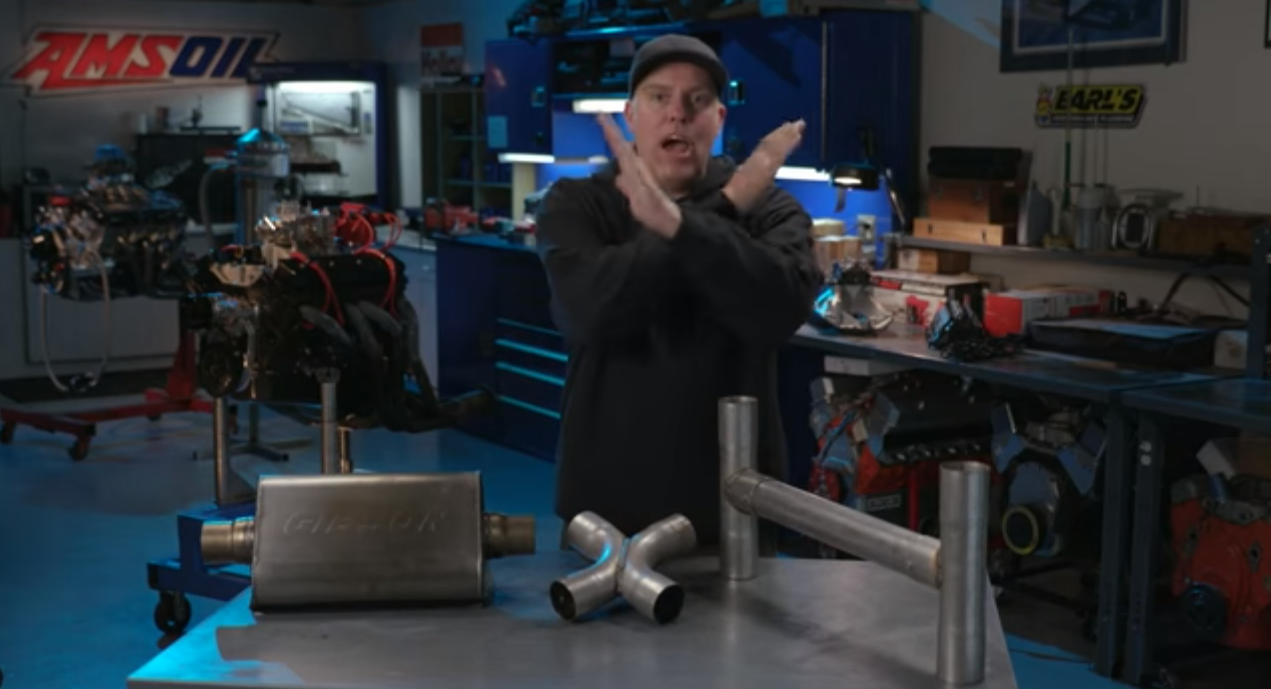Exhaust Talk: Straight Pipe vs. Crossover, H-Pipe, or X-Pipe?

Exhaust crossovers compared, tested, and explained!
David Freiburger is a car guy who, at this point, needs no introduction. In this video from Motor Trends Engine Masters series, he aims to improve our understanding of exhaust flow.
The goal of the video is to explain the differences between an H-pipe, an X-pipe, and no crossover pipe at all. The engine they’re using to carry out the test is a carbureted 5.3 LS motor that’s nearly stock. As Freiburger says, the type of motor isn’t important, however, this information is useful to just about anybody.
https://www.youtube.com/watch?v=fCio5K0WfHU
To get the most consistent measurements, each engine is tested three separate times in each configurations to test power, torque, and sound levels.
With straight pipes, the average was 362.3 horsepower at 6100 RPM 366 lb/ft of torque at 4400 RPM. With that baseline established, it was time to add crossover pipes and continue testing. We all know that a crossover will make your car sound more mellow as opposed to straight pipes, but what does it do for power?
With the H-pipe, the average of the three runs showed an increase in torque, of 370 lb/ft at 4300 RPM, 100 RPM sooner than the straight piped run. Horsepower dropped just a bit, to 360.8 at 6000 RPM.
Looking at the dyno graphs overlaid, the increase in low-end torque is very noticeable. At lower engine speeds, with exhaust gas moving more slowly, the crossover is able to scavenge more exhaust gases. The improvement is less noticeable at higher RPMs, as the gases move faster.
The final test was the X-pipe. It’s immediately noticeable how much quieter and more mellow-sounding that 5.3 is at idle. After three runs, the average was 362.1 horsepower at 6000 RPM, with 369.9 lb/ft of torque at 4300 RPM.
Those are very similar numbers to the H-pipe, and the graphs look nearly identical. However, the big difference was in sound – Freiburger thinks that the X-pipe sounds the best at all, and after hearing it in the video, we’re inclined to agree. While every setup is different, it seems that the X-pipe is the best of all worlds. Mellower at idle, better sounding at speed, and improved low-end torque. It’s a win/win/win.
